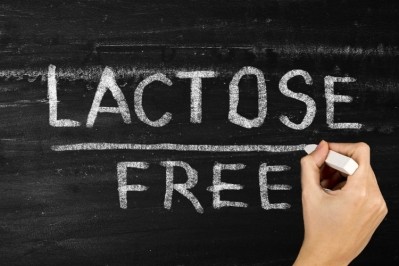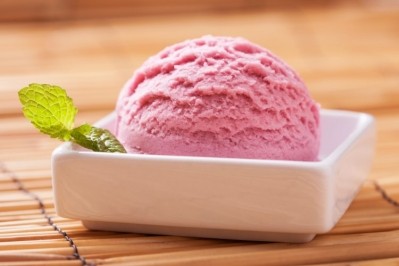Are US dairy brands making the most of the lactose-free trend?

Lactose-free dairy has traditionally been consumed by those with a lactose intolerance – but recent US retail sales data suggests the category is experiencing a resurgence that’s likely to continue in the future. So is this trend driven by diet, or are consumers simply wanting more ‘free-from’ dairy?
In the US, around 36% of the population has some form of lactose intolerance, but appetite for lactose-free milk in particular has increased. According to Circana, in the past 6 to 12 months alone, lactose-free milk has surged 11.6% in sales and 2.6% in volume terms. At the same time, total dairy milk decreased -1.7% in sales and -0.4% in volume. This is despite the fact that lactose-free dairy milk is priced at a premium, at $9.40 per gallon, while total milk retails for nearly half the price of the lactose-free stuff, at $4.86 per gallon*.
So what makes lactose-free milk appealing to consumers, particularly when compared to other free-from alternatives such as plant-based? Circana’s John Crawford, SVP, Client Insights-Dairy, told us there are several positives for the lactose-free category.
“The obvious one is that lactose-free dairy does not cause gastrointestinal issue for consumers that are lactose intolerant,” he explained. “Longer shelf-life is another benefit, and for ultra-filtered products [which contain half the sugar and twice the protein of regular milk], reduced sugar and higher protein are additional benefits.”
Compared to plant-based milk alternatives, lactose-free dairy milk performs ‘just life non-LF dairy milk, while plant-based does not,’ Crawford said, suggesting that plant-based milk alternatives still come up short in terms of mouthfeel and their suitability in cooking and beverages.
For manufacturers looking to innovate in the lactose-free category, appealing to health-conscious consumers as well as the sports and active nutrition crowd could be a winning strategy – particularly if benefits such as low-sugar and high protein can be highlighted on-pack.
“There are other benefits that should be touted across dairy,” Crawford said, “including calcium, vitamin D, bone strength, and so on. Manufacturers can also tout clean-label benefits, which sets dairy milk apart from plant-based. Lastly, other benefits can be used as enhancements, including prebiotics and probiotics, immunity claims, and so on.”
In terms of demographic reach, lactose-free milk is traditionally more widely consumed by Asian, Hispanic, African American and other non-white ethnicities for dietary reasons. Circana did not provide a breakdown of how lactose-free dairy consumption varied across different age groups – but a recent narrative review published in Frontiers in Nutrition has highlighted that there’s a lack of research into consumers’ motivation to opt for lactose-free milk for social and phycological reasons, rather than dietary.
Having reviewed the available research, the authors discussed that label claims such as ‘lactose-free’ may trigger a positive emotional reaction and influence consumption, with shoppers linking this free-from label with healthiness.
The review also found that consumers may be purchasing lactose-free milk as a way to declare their awareness of their consumption choices – specifically, that they have ‘a knowledge about food that allows them to choose quality products’; and some simply resonate more with label claims that mention the absence of lactose.
What are US dairy brands doing to capture demand?
Last year, Good Culture and Dairy Farmers of America (DFA) made inroads into the US functional lactose-free space with the Good Culture Probiotic Milk, a long-life fluid milk product fortified with the BC30 probiotic post heat treatment. It was touted as “the first ever ultra-pasteurized milk with added probiotics” by DFA Dairy Brands senior vice-president of marketing Rachel Kyllo, who added: “While there are many gut-friendly products out there, few are in categories as widely present in consumer households as fluid milk. Our teams have been exploring lactose-free probiotic milk for several years; the project became especially relevant as the COVID-19 pandemic accelerated consumer demand for products that can support immune health. Functional foods, especially those that support digestion and immunity, continue to be top-of-mind for consumers.”
fairlife, a Coca-Cola Company subsidiary and a major player in the US ultra-filtered dairy space, has been capitalizing on the sports and active nutrition front with its range of milk products and protein shakes. The brand is the official protein drink of Team USA and also has a multi-year partnership with the most decorated female swimmer, Katie Ledecky.
The brand claims to have achieved a 25% household penetration in the US – being present in 34 million US households in 2023, out of around 131 million overall – but has moved to tighten its product portfolio, having discontinued its ice cream range but kept its high-protein and flavored and plain dairy beverages. The company is also building a new factory in the Northeast US, in a bid to increase production.
Besides fluid milk products, lactose-free innovation has spread to, well, spreadable.
California-based co-operative Challenge Dairy Products produces a Spreadable Lactose Free Clarified Butter with Canola Oil. The launch was driven by the lactose-free category growth, which the co-op says is projected to reach nearly $20bn in value by 2025. The product blends clarified butter with canola oil ‘to keep the flavor, characteristics and quality of real butter without the lactose,’ thus providing a dairy product for consumers with a lactose intolerance who also do not wish to switch to non-dairy options such as vegan butter.
How is the US lactose-free milk market shaping up?
Circana’s John Crawford told us that lactose-free milk ‘still has runway’ as its market share is only 13% of total dairy milk. “I expect growth to accelerate as inflation subsides and consumer outlook improves,” he said.
Besides sharpening the category’s image to appeal to a wider variety of consumers, brands have other barriers to overcome.
“Price premium is a barrier today, but it is also a barrier in plant-based,” Crawford added. “Manufacturer capabilities and slower throughputs with smaller packages are another barrier to future growth.”
*In dollar terms, total dairy milk sold $16.8bn and lactose-free milk sold $2.2bn.








